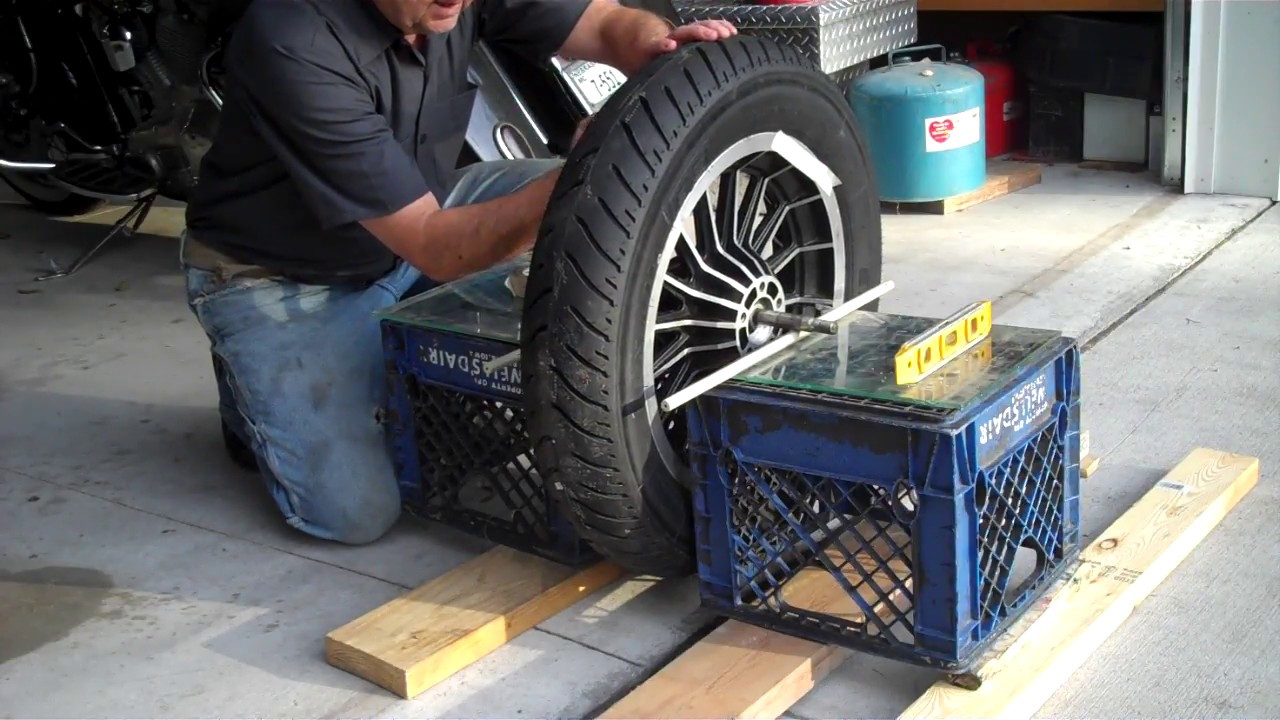Delivery options and delivery speeds may vary for different locations
Sign In
or enter a zip code
Email * Password *
REPAIR & HOW TO
MAINTENANCE
TROUBLESHOOTING
GUIDES
TIPS & TRICKS
ALL ARTICLES WATCH VIDEOS ABOUT US SHOP PARTS CONTACT US
Your motorcycle’s tires connect the bike’s power and handling to the road. When the tires wear out, you face both performance and safety issues.
Nobody wants to change out tires too early due to the extra expense, but doing it too late poses risks. Knowing how to inspect the tires on a motorcycle can help you decide whether it’s the right time to change them out. Here’s how to check your motorcycle’s tires for wear.
Today’s motorcycle tires are better engineered to provide indicators about when they’re worn.
A new tire usually starts with 5-6 millimeters of tread depth that shallows the grooves as the tire wears down. There are small bumps in the grooves of the tire tread that serve as wear indicators. When the tread surface is worn down to those bumps, there’s about 1mm of tread left, which means it’s time for a change.
When to Change a Motorcycle TireYou should change a tire before it reaches 1mm of depth, because once the tire is worn down to that level, the grooves are less effective at channeling water out from between the contact patch of the tire and the road.
Two millimeters of tread depth is about as low as you should let it go. You don’t need a fancy measuring instrument or other tire tools
to detect 2 millimeters of tread depth. Use a penny if you don’t have a measuring tool handy.
You don’t need a fancy measuring instrument or other tire tools
to detect 2 millimeters of tread depth. Use a penny if you don’t have a measuring tool handy.
The distance between the top of President Lincoln’s hair and the edge of the penny is about 2mms. Place your penny in the tire groove with Honest Abe headfirst. If you can see the top of his hairline sighting along the tire’s surface, then Lincoln says it’s time to make a change.
Motorcycle Tire WearTires on your machine can wear out in a number of ways. When kept on the machine too long, the tire will continue to wear all the way down to the cords, creating a dangerous situation.
Other tires might exhibit an irregular wear pattern. This can be the result of many mechanical factors including a misaligned wheel, which can create an uncomfortable ride as a cupped feature develops on the tire tread.
Motorcycle Tire Dry RotAn overlooked issue when evaluating motorcycle tires is dry rot. Over time, a tire becomes less supple and can start to crack. It can make the tire more susceptible to blowouts or coming apart at the bead where the tire is tucked under the wheel.
Over time, a tire becomes less supple and can start to crack. It can make the tire more susceptible to blowouts or coming apart at the bead where the tire is tucked under the wheel.
Fortunately, every manufacturer stamps a manufacture date on their tires, which can serve as an expiration date of sorts to give you guidance on when a tire's time is coming up. It's generally a four-number code:
For example, "4907" indicates the tire was manufactured in the 49th week of 2007.
How Old is Too Old?The industry standard for the lifespan of a motorcycle tire is six years, but five years is a better time to retire a tire. Higher performance tires with softer rubber compounds can degrade even quicker than that, so make sure you keep up with the maintenance, and check the tread depth on your tires often to keep your machine riding and handling safely.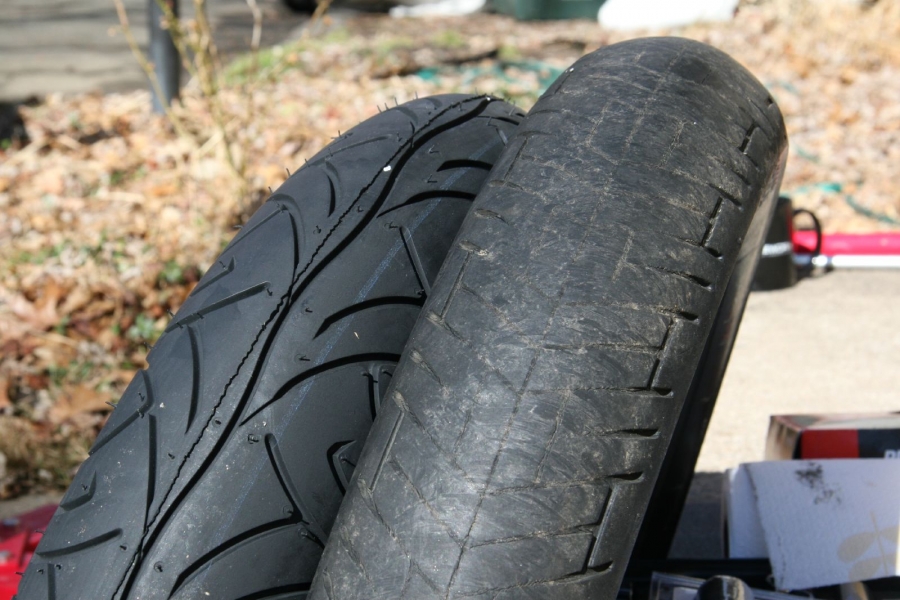
body
Skip to content
Brittney and her pup, Shawty (“Shorty” with a southern twang), tackle DIY motorcycle maintenance in their own garage together.
In WRN's do it yourself (DIY) section, we cover simple, affordable check-ups you can easily perform yourself that will keep your motorcycle safe and running well. You can find your bike’s service intervals and important bike-specific information in what we like to call M. O.M. That's your motorcycle owner’s manual. M.O.M. always has the answer!
O.M. That's your motorcycle owner’s manual. M.O.M. always has the answer!
In this article we will cover one of the most important parts of your bike—tires. Your motorcycle tires are the only things that make contact with the road when you’re riding, so it’s important to take good care of them.
Punctures can be present without a leak and are hard to notice without a good inspection.
Check your motorcycle’s tire pressure often, at least once a week, but better yet before every ride, even if you ride every day. If there is a significant change in air temperature overnight or between rides, there’s a good chance your tire pressure may have changed too.
Check the motorcycle tire pressure if you add a load or change elevation significantly and will be riding at the new elevation for more than an hour. For example, the difference between sea level and Big Bear Lake, California, is almost 8,000 feet and can be ridden in three hours.
Information on specs for motorcycle tire pressure will come from M.O.M. It might even be on a sticker on your bike's swingarm or frame.
Keep an eye on your tread wear as well, always making sure it has not yet worn down to the level of the wear bar (arrow). If the wear bar is level with the tire’s surface, it is time to replace it.
If you are unable to find a wear bar on your tire, you can measure the tread depth with a tread depth gauge or a simple ruler (if it fits).
If you find an offending object that is embedded in place, if the tire is not losing air, cautiously ride to the nearest shop for inspection. Whether it is leaking or not, you may be able to get professional help to remove the object and repair the puncture on site. You may also be able to apply a tire patch to get you to the shop without leaving you stranded.
You can check if the puncture is causing a leak by spraying a small coating of Windex or soapy water (or saliva in a pinch) over the object or puncture wound and watch for bubbles. If there are no bubbles it is holding air.
If there are no bubbles it is holding air.
If your bike’s tire pressure is high or low, simply release or fill with air until it is at the recommended pressure. It is normal for tire pressures to vary due to heat, elevation, and weather changes. So check often and maintain accordingly.
This portable MotoPump Mini Pro inflator gets power right from your motorcycle’s battery, and has a built-in LED light and backlit air pressure gauge which makes it easy to inflate tires on the go.
90-degree valve stems like this one allows for easy access when checking tire pressure and adding air. If your motorcycle doesn’t have one, they can be installed the next time you have the tires changed.
The general rule of thumb for tread wear is that anything less than 3/32” or approximately 2mm means it’s time to replace your tire.
This tire passes the top of Lincoln's head, passing the test.
Keep an eye on the age of the tires. Every DOT tire has an age stamp on the sidewall, indicating the week and year of manufacture.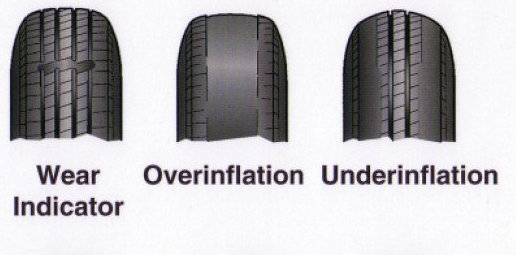
This number represents the week and year of manufacture. This tire came to life on the sixth week (February) of 2016. Fun fact: the date stamp is always on the left side of the front tire and the right side of the rear.
A guaranteed safe age is less than two years for sport tires and less than three years for touring or cruising tires. This will change significantly between manufacturers and how you treat and store your bike. So use this information as a basic guide.
If your tire is beyond its age limit and you’ve confirmed this with the manufacturer, replace it. You never know what the inside of the tire looks like and dry rot can be an invisible danger.
If you find that you only need to replace one tire, you need to replace it with the same make and model of the tire. Tire tread patterns are engineered to work together, and mixing two different tread patterns and compounds can cause a dangerous situation. And please, for the love of riding, always select a motorcycle-specific tire!
Do not get overwhelmed by the overly-complicated size, load rating, speed rating, and compound explanations you might find on many online tire guides. What you really need to know can be explained in a few simple steps.
What you really need to know can be explained in a few simple steps.
Many original equipment (OE) motorcycle tires were designed to work best on that very bike.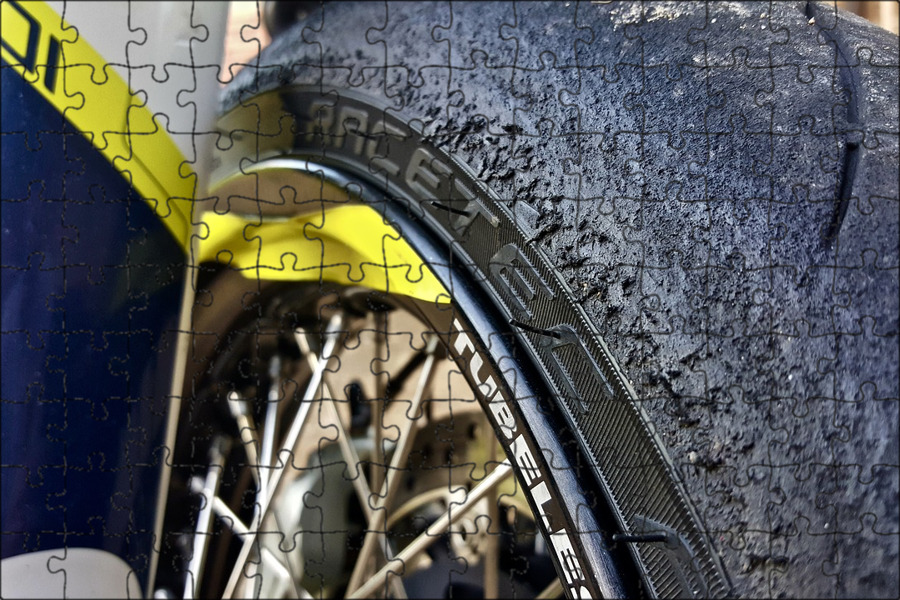 So if you don’t know what tire to choose when it’s time to replace them, you can always stick with the OE tire.
So if you don’t know what tire to choose when it’s time to replace them, you can always stick with the OE tire.
Many shops or dealerships will charge extra (or won’t install them at all) if you buy the tires elsewhere and bring them in to be mounted. Don’t deny your local shop the opportunity to earn your business: shop for your tires there.
Falling prey to price: Online deals can seem too-good-to-be-true and are hard to pass up. Keep in mind, tire bargains from a warehouse could indicate a batch of old tires that they want to get rid of.
Longevity: meant to last as long as possible, usually requires a hard compound that heats up slower and doesn’t “melt” or wear down as quickly. Great for touring and cross-country riding.
Aggressive Profile: meant to maximize traction at excessive lean angles. Great for racing.
Multi-Surface: meant for riding both on and off the street with a ratio represented in percentages.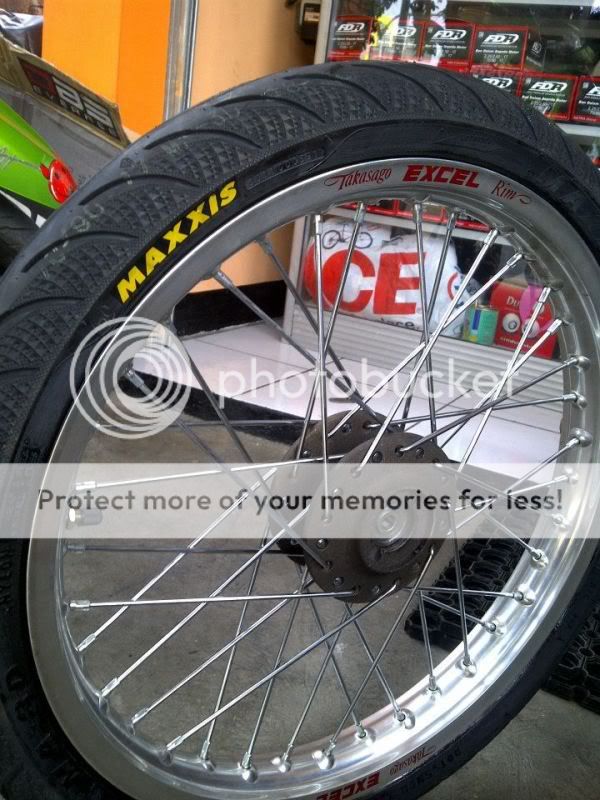 For example, 70% street, 30% dirt. Great for exploring the wild outdoors.
For example, 70% street, 30% dirt. Great for exploring the wild outdoors.
Multi-Compound: meant to combine longevity (commuting or touring) and traction (curvy roads) by making the tire from rubber that is harder in the center and softer on the edges. This means certain parts of the tire heat up faster/slower and have more/less traction and flex. Great for riders who commute every day and hit the twisties on their days off.
The Metzeler 888 Marathon Ultra (left) and Pirelli MT 66 Route (right) are good examples of touring tires that are engineered to last for many miles.Sport tires such as the Metzeler Racetec RR (left) and Pirelli Diablo Supercorsa SC (right) are designed to have maximum traction and can handle high speeds.Dual-sport or enduro tires such as Pirelli's Scorpion Rally STR (left) and Metzeler's Karoo (right) offer riders the best of both worlds, combining on-road performance with off-road capability.Metzeler's Roadtec 01 (left) and Pirelli's Angel GT (right) sport-touring tires offer riders sporty handling in wet and dry conditions without wearing out quickly.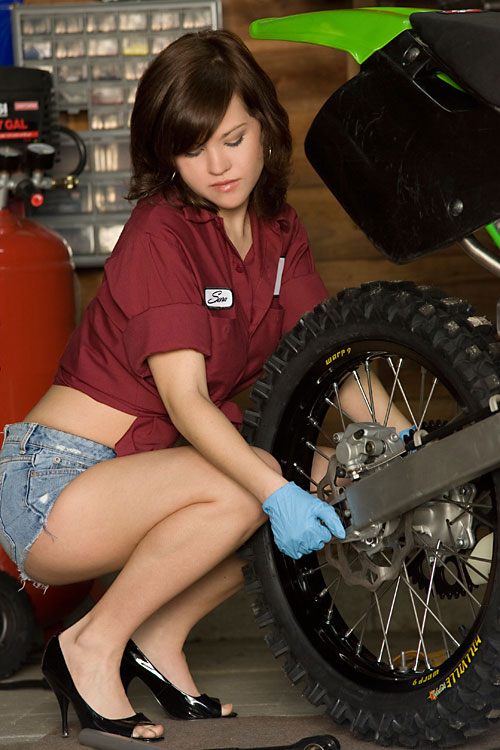
Like the saying goes, keep the rubber side down!
Sign Up Now
It's no secret that motor rubber is considered a consumable. Quite expensive, it must be said. We all remember from traffic rules tickets that motorcycle rubber wear is considered acceptable up to 0.8mm. But not to run with a ruler around the motorcycle every morning? Moreover, rubber wear is different, because not only a worn tread is the reason for replacing motor rubber.
Quite expensive, it must be said. We all remember from traffic rules tickets that motorcycle rubber wear is considered acceptable up to 0.8mm. But not to run with a ruler around the motorcycle every morning? Moreover, rubber wear is different, because not only a worn tread is the reason for replacing motor rubber.
Consider the reasons for changing tires:
The first and main reason rubber is scrapped. Tire tread wear is determined visually by indicator pointers. On the tire, if you carefully inspect it, there are special marks inside the tread pattern. These tubercles are not a manufacturing defect, but that little thing that tells you that it is dangerous to use rubber further. When the tread pattern is even with the bump, you should buy a fresh tire. It's simple, you don't even need a ruler.
In fact, a tire wears out the fastest at two points in its life - during break-in and after tread wear. The smaller the pattern on the rubber, the faster it will become unusable, it is worse to keep the road and slide in every possible way on a wet surface. In case you think the rubber wears evenly and after the 0.8mm critical point you still want to ride, I'll disappoint you, because after this point the rubber will begin to wear off at an amazing deserter speed.
The smaller the pattern on the rubber, the faster it will become unusable, it is worse to keep the road and slide in every possible way on a wet surface. In case you think the rubber wears evenly and after the 0.8mm critical point you still want to ride, I'll disappoint you, because after this point the rubber will begin to wear off at an amazing deserter speed.
Cold tires wear out more slowly than warm tires. By the way, tires with lower pressure warm up faster, and therefore wear out more intensively. Low pressure affects wear at the edges of the tire, and high pressure contributes to abrasion in the center.
What did you think, bought a rubber, put it on and it will always be like new? Alas, nothing lasts forever under the moon, and even rubber is treacherously aging. The first signs that it is time for rubber to retire are cracks. Large or small, depends on storage conditions and how sad the tire is with life. Additional signs of the age of rubber - the color turns from black to gray, loss of elasticity, hardening and roughness of the surface.
Additional signs of the age of rubber - the color turns from black to gray, loss of elasticity, hardening and roughness of the surface.
It is logical that mechanical damage includes everything that has affected the rubber from the outside, the vast majority are impacts and punctures. Riding habits, bad landings, even the influence of suspension settings can damage the integrity of the tire.
The combustion of rubber and spools should be considered as a separate point here. Since not every tire is used in light modes. Have you been to race tracks or demonstrations? If so, then you're familiar with the smell of burnt rubber, especially if you've watched someone drift. By spools, collected rubber in different parts of the tire, you can determine how the driver drove, especially true for track riders.
All damage that the rubber receives during storage, as well as in the process of uneven loading, is placed here. It happens that bulges appear on the tire, a sure sign that it's time to rest. Any deformation of the tire inevitably leads to a change in the distribution of force and to a shift in the contact patch, so such rubber will have to be changed to fresh.
Any deformation of the tire inevitably leads to a change in the distribution of force and to a shift in the contact patch, so such rubber will have to be changed to fresh.
No motor rubber can last forever. However, it is quite possible for us to extend its service life to the maximum. Today we will talk about the main types of tire wear, as well as give some tips on how to avoid each of them.
1. Tread wear. We can say that this is the natural death of every tire. Over time, the rubber wears out even with the most careful driving (but this takes years). According to Russian laws, the use of tires with a tread depth of less than 0.8 mm is prohibited. Of course, you don’t have to crawl around the tire with a ruler - modern motor rubber models are equipped with a wear indicator.
2. Aging. Even at low driving intensity, every tire experiences natural aging. It is expressed in the appearance of microcracks and shape deformation. However, under proper storage conditions, this effect is observed no earlier than 5 years after purchase. But a tire can become unusable even with a deep tread.
It is expressed in the appearance of microcracks and shape deformation. However, under proper storage conditions, this effect is observed no earlier than 5 years after purchase. But a tire can become unusable even with a deep tread.
3. Local wear. May occur in a specific part of the tread or even on the sidewall of the tire. Indicates unevenly distributed pressure in the chamber or a malfunction in the suspension or chassis.
4. Mechanical damage. Puncture or deep scratch. They can occur both due to external factors, and when installing rubber of the wrong size.
What should I do to avoid all of the above?
1. Check the tire pressure. This will avoid both local wear and reduce the likelihood of mechanical damage. You can find out the necessary parameters on a special plate, which manufacturers usually place on the steering column. For driving on wet asphalt, it is recommended to inflate the wheel by 10% of the base value. You can learn more about the value of tire wear pressure in the video below.
You can learn more about the value of tire wear pressure in the video below.
2. Prevent the tire from being affected by negative external factors. First of all, this applies to direct sunlight, acid rain, sparks and fuels and lubricants. It is also not recommended to use powerful chemical detergents for washing. Experts recommend using ordinary soap and warm water.
3. Minimize heavy impacts and other mechanical impact on the tire. Also regularly inspect the tires for foreign objects stuck in the tread: screws, glass fragments, etc.
4. It is better to drive the first 100-200 kilometers after installing new tires in a gentle mode in order to thoroughly “run in” the tires. With this approach, the "aging" of rubber will not occur so quickly. It is useful to extend the operating period by warming up the tires daily after a “cold” start.
5. Provide normal conditions for storing motor rubber in the winter.